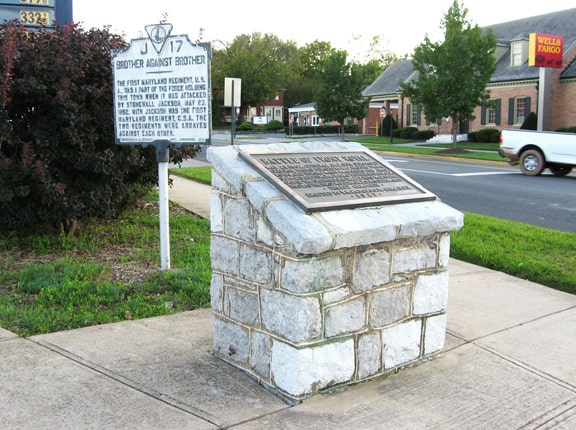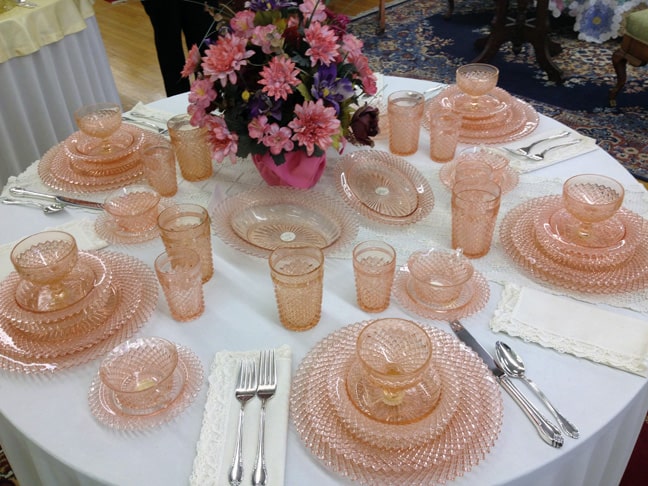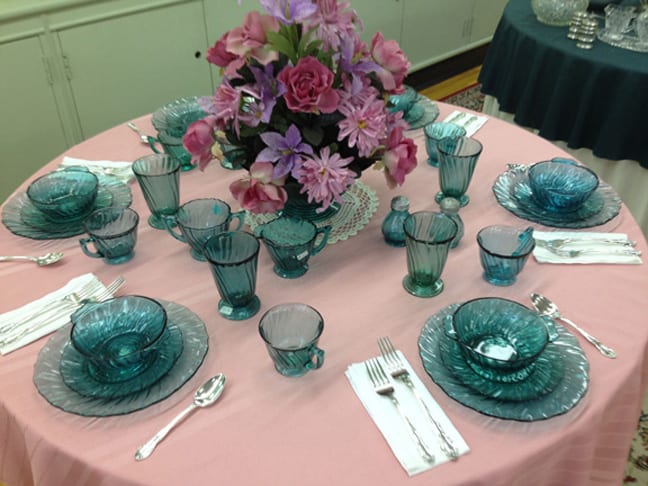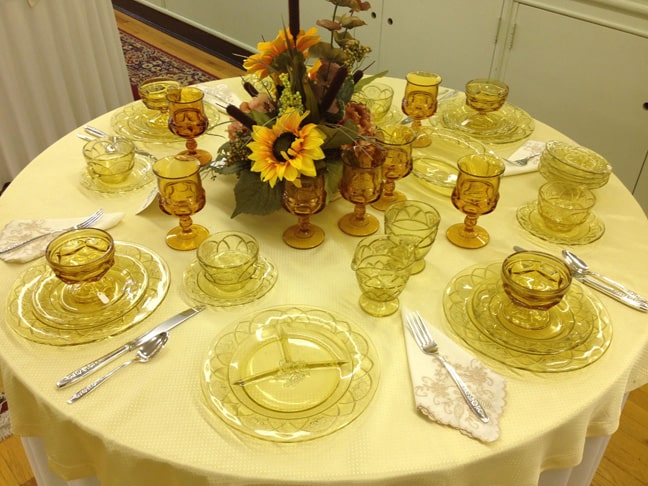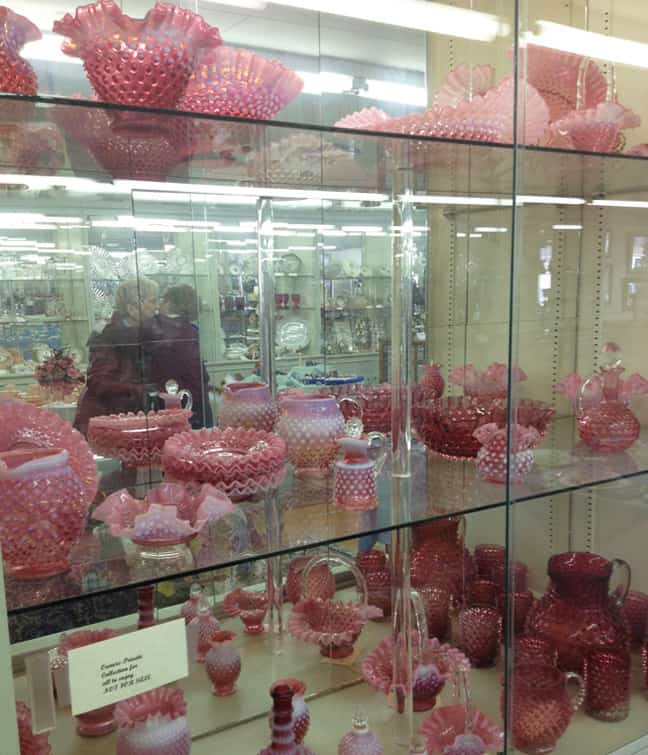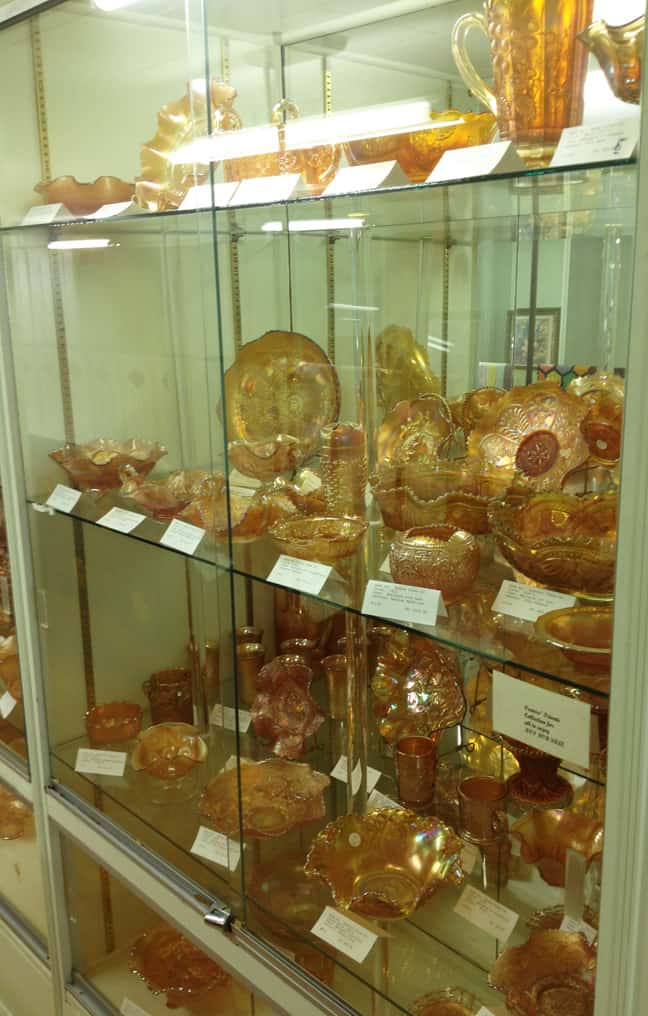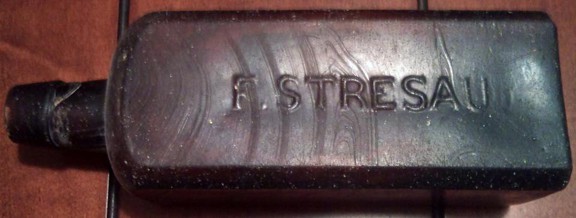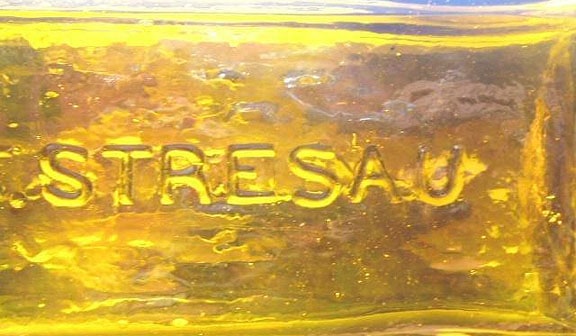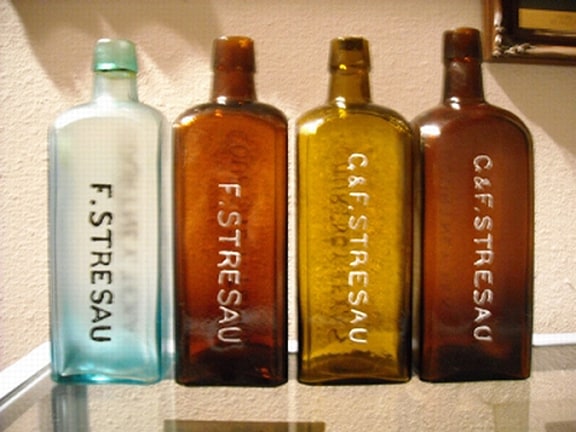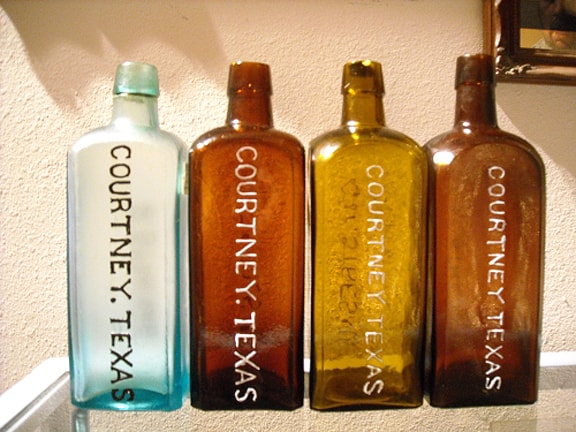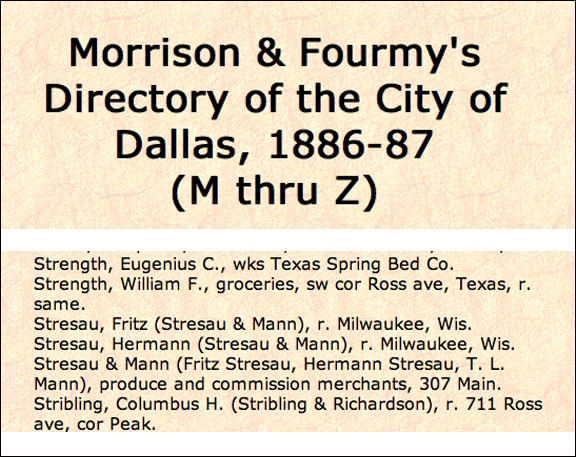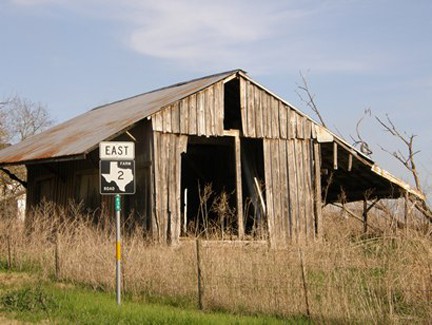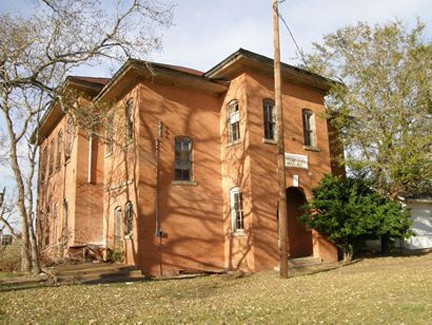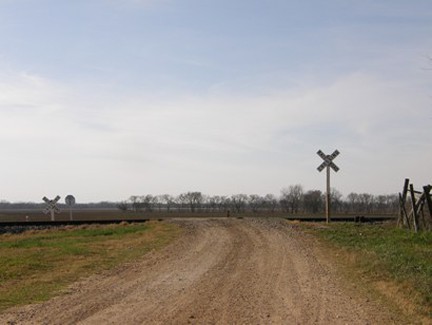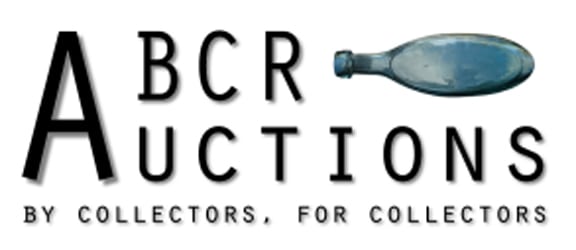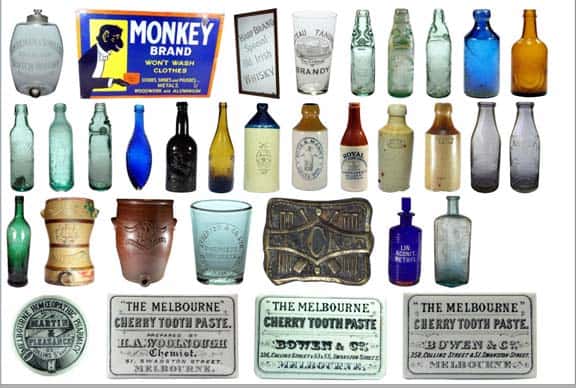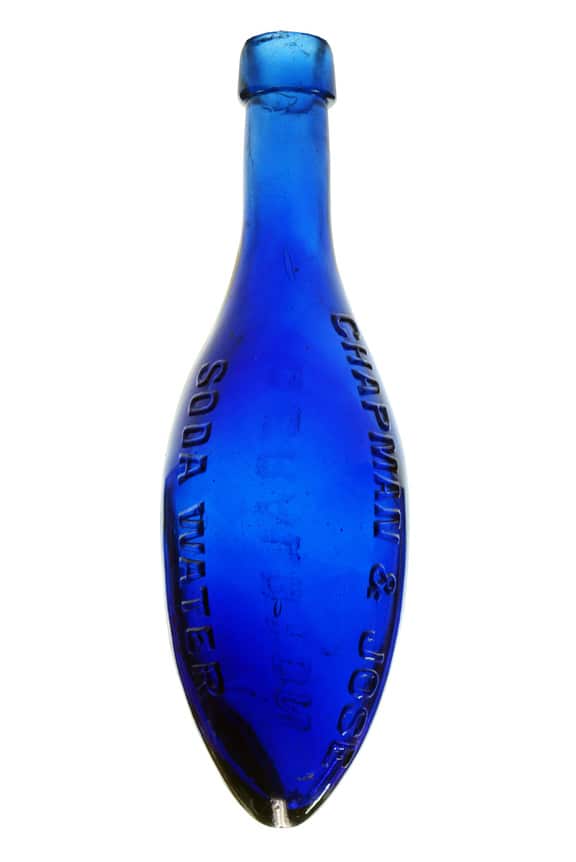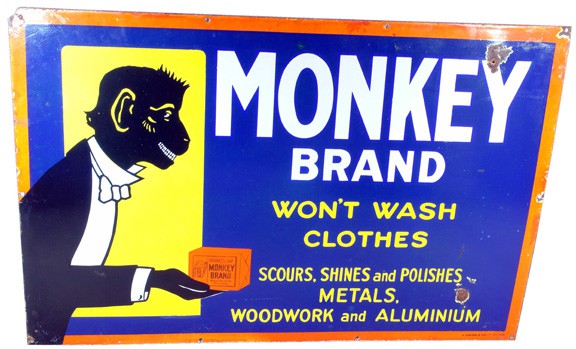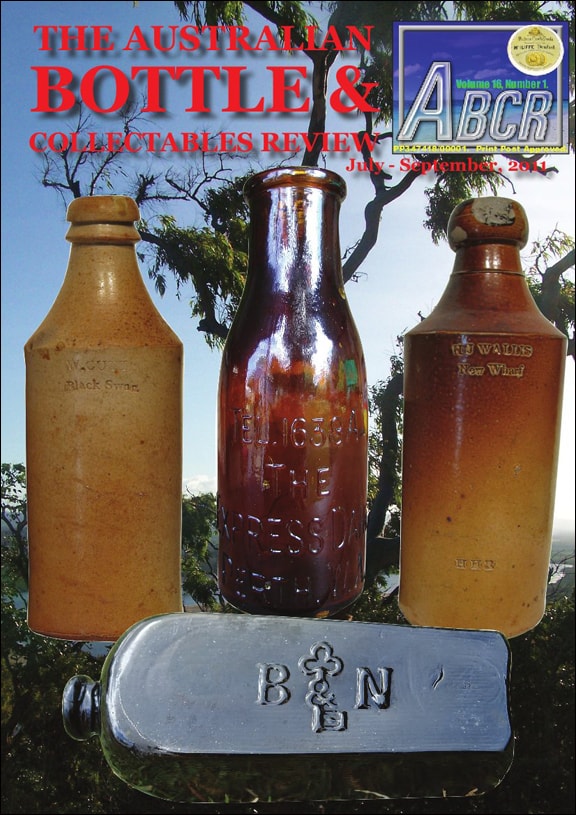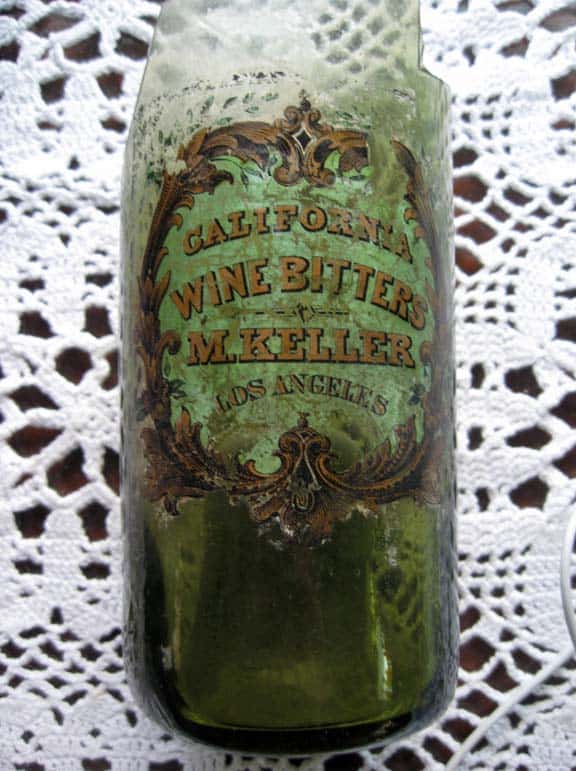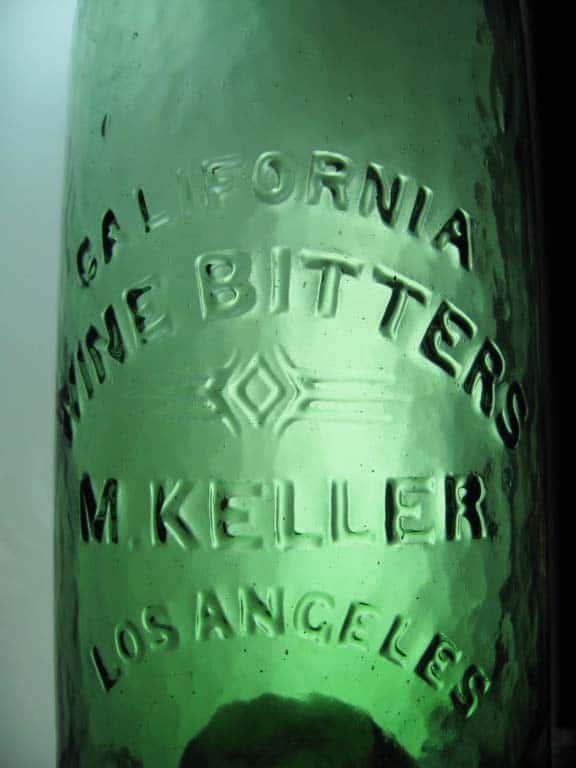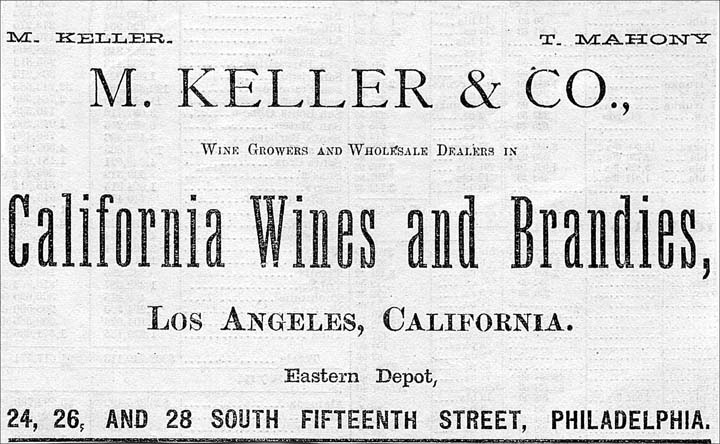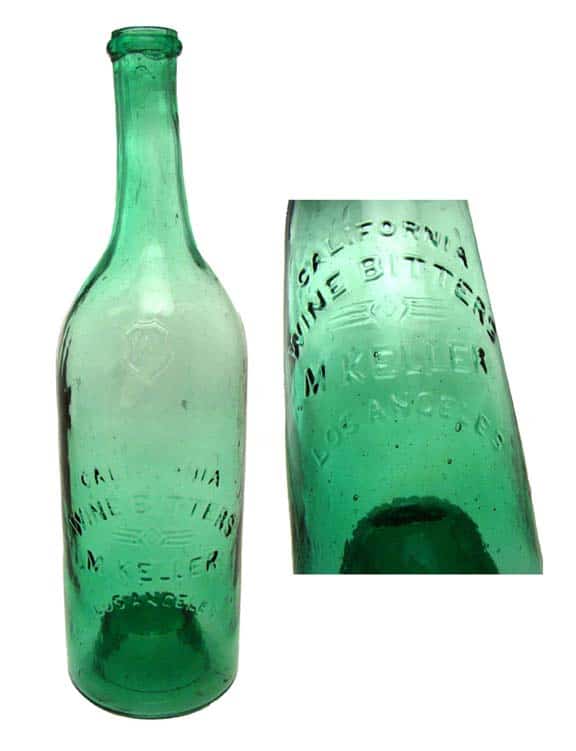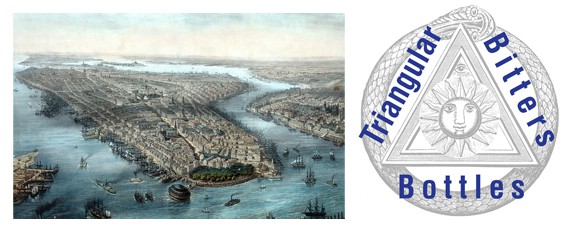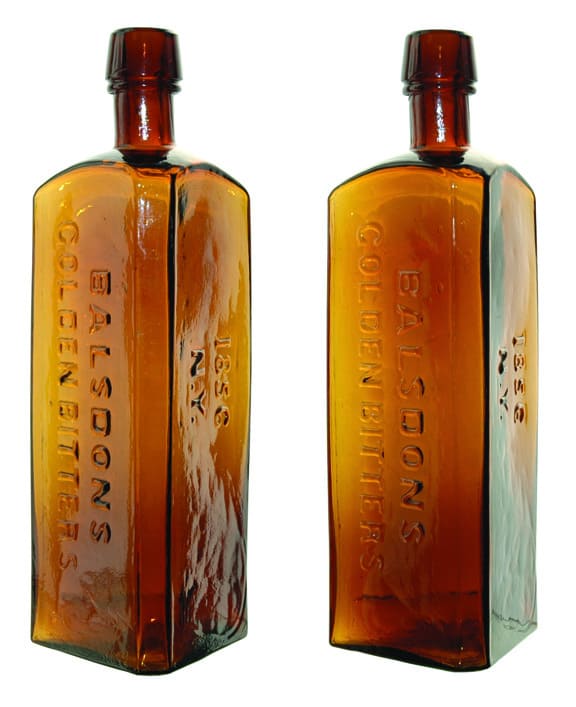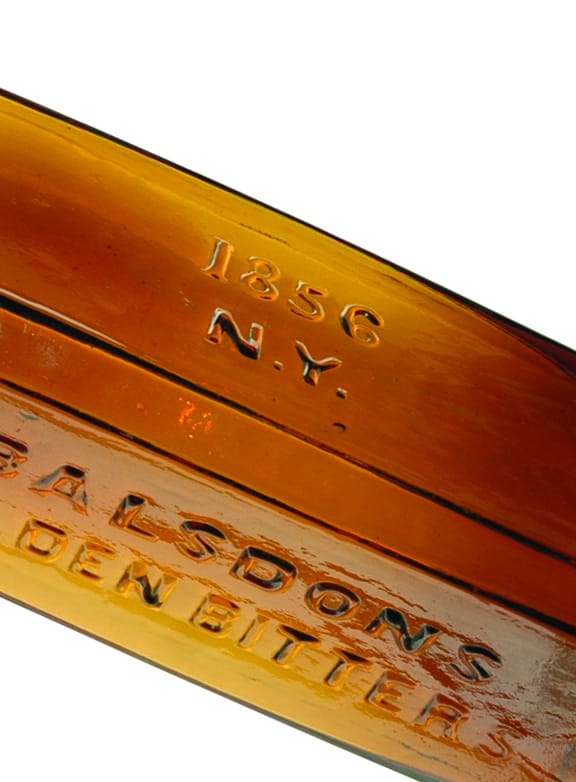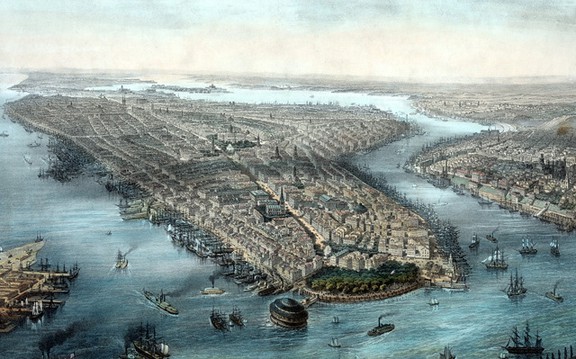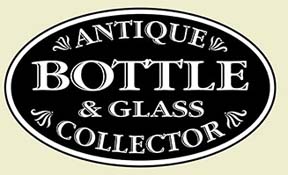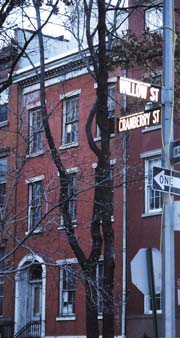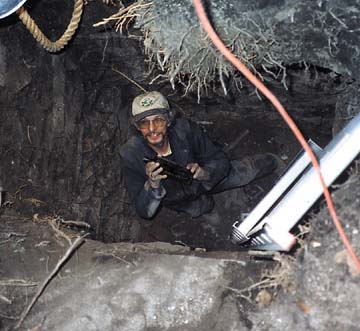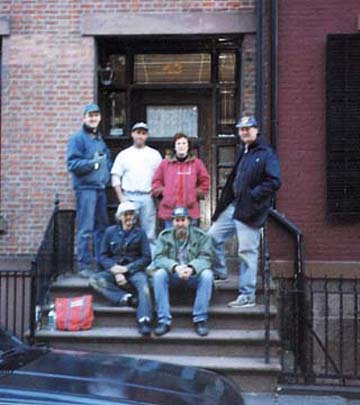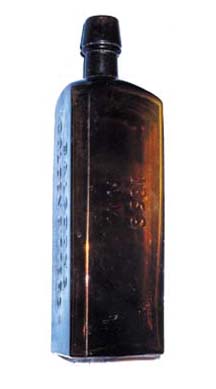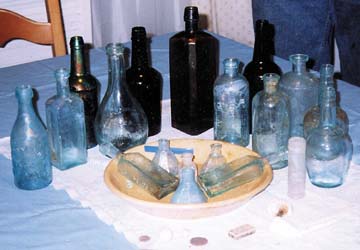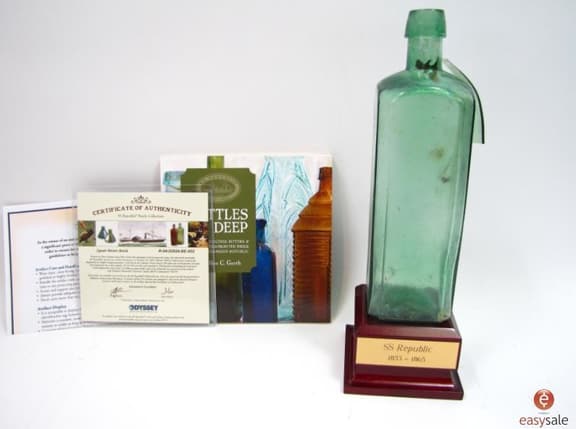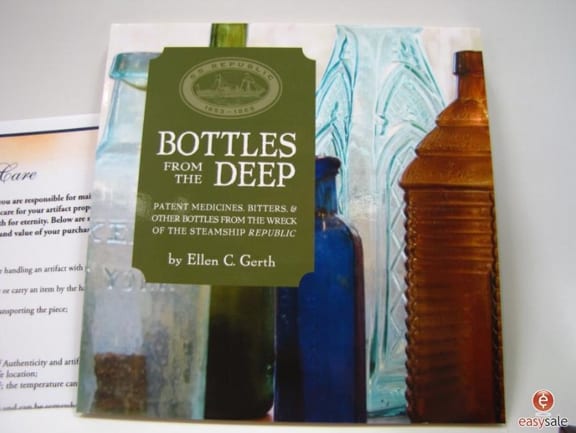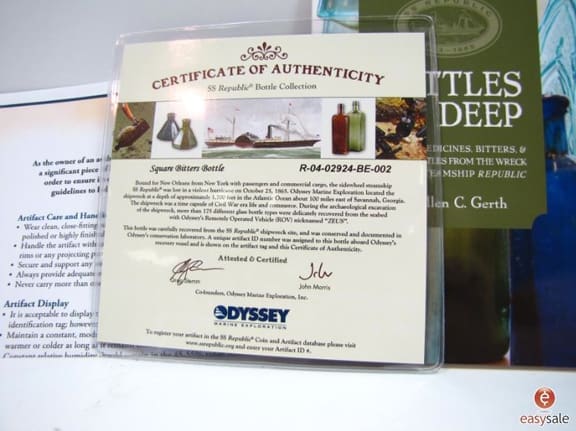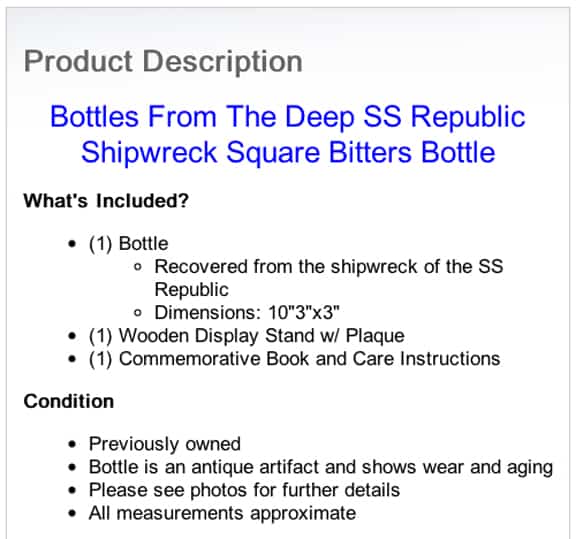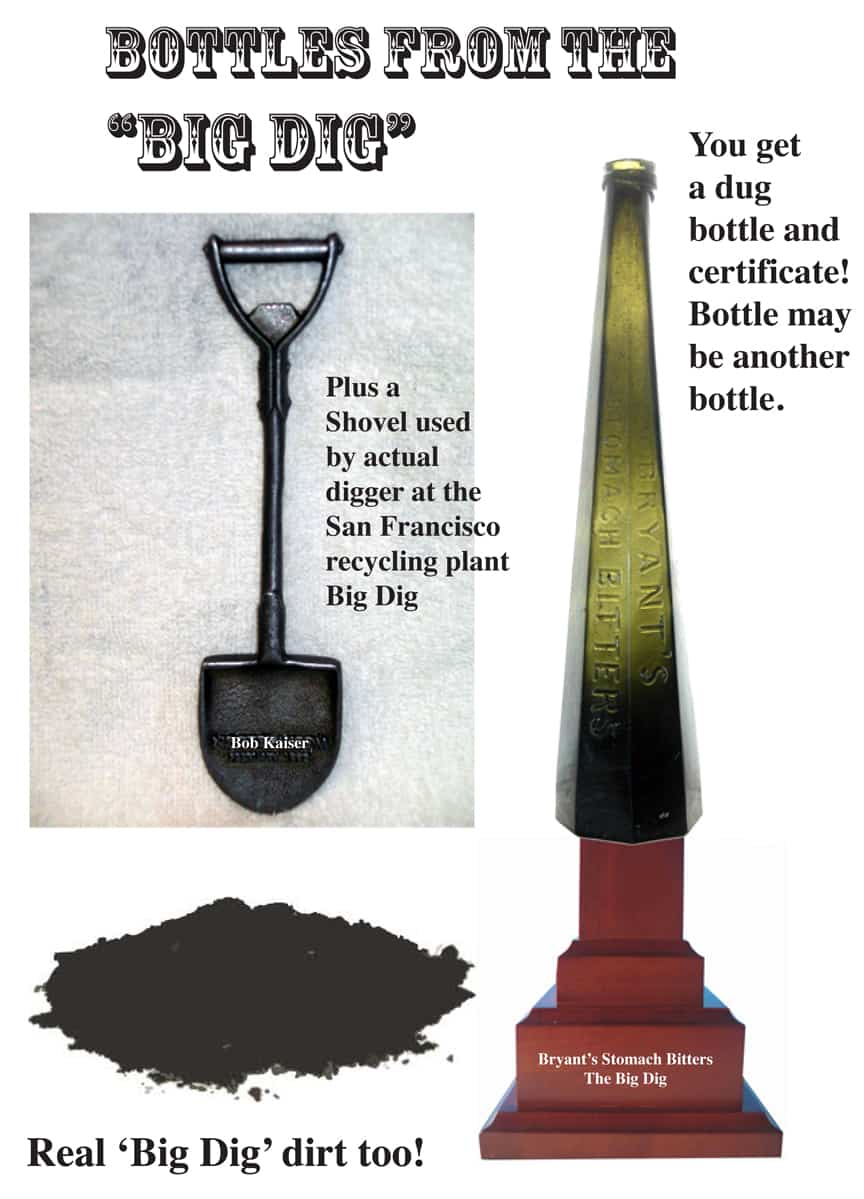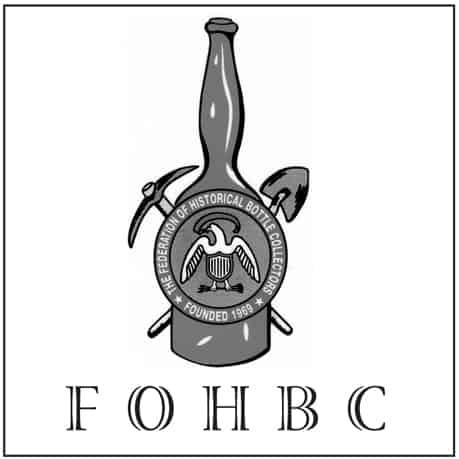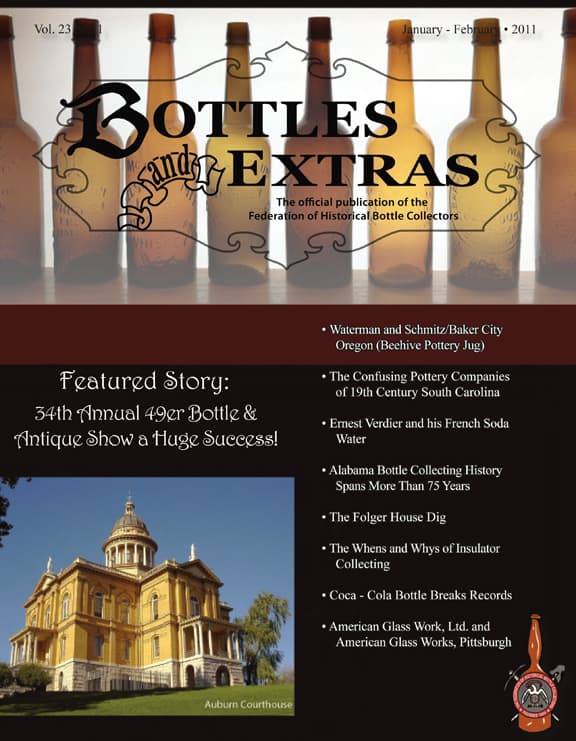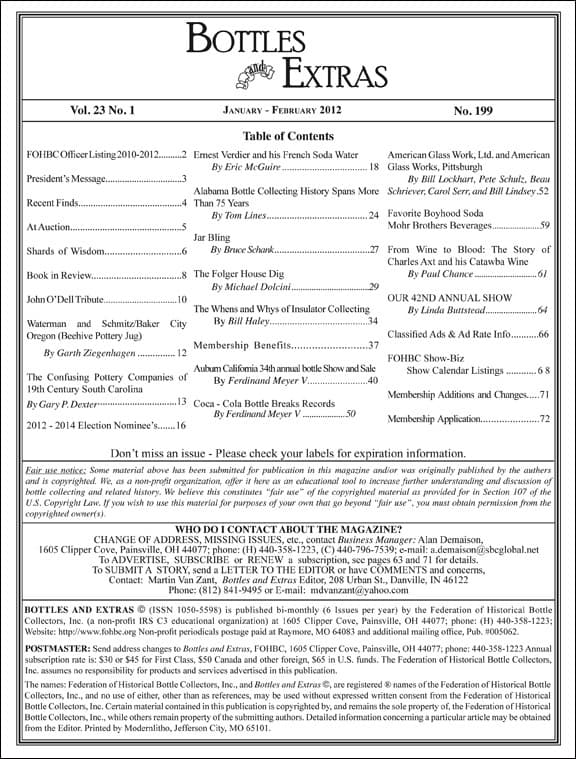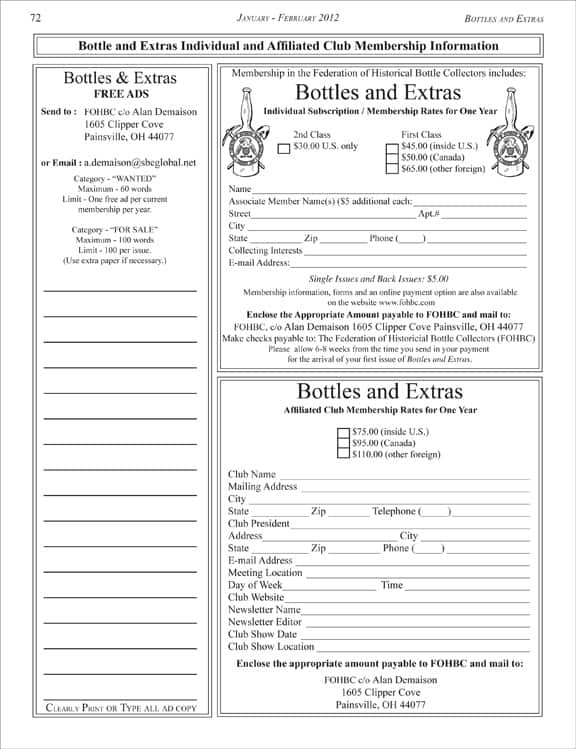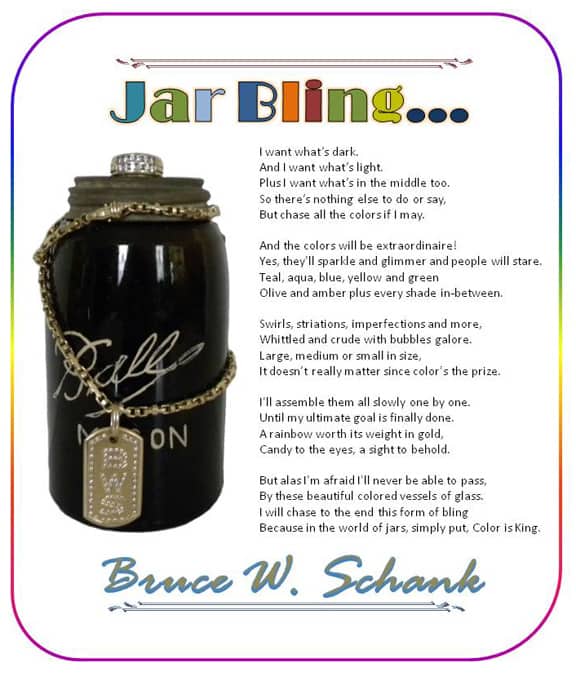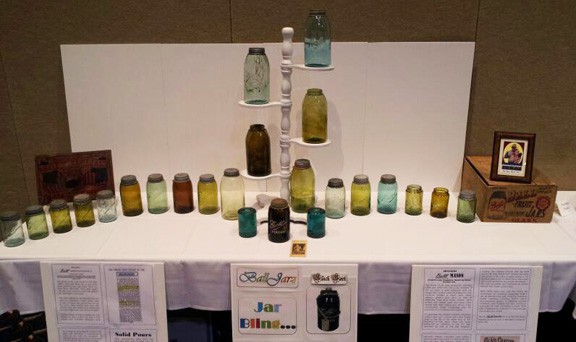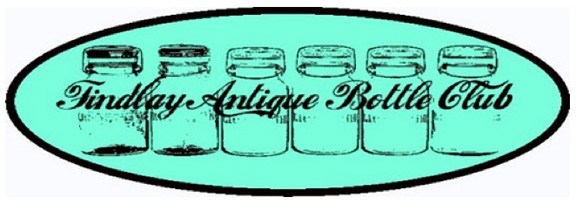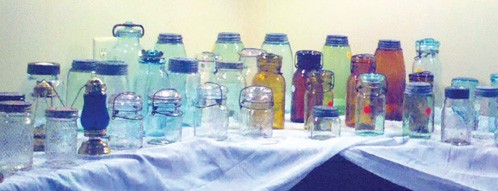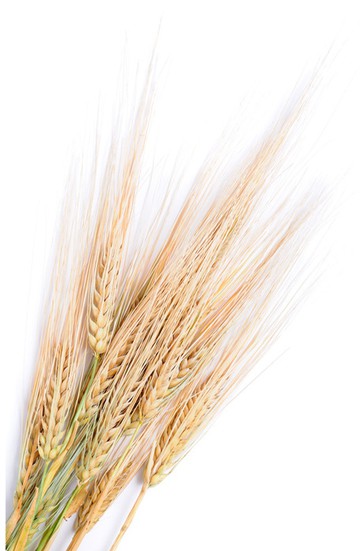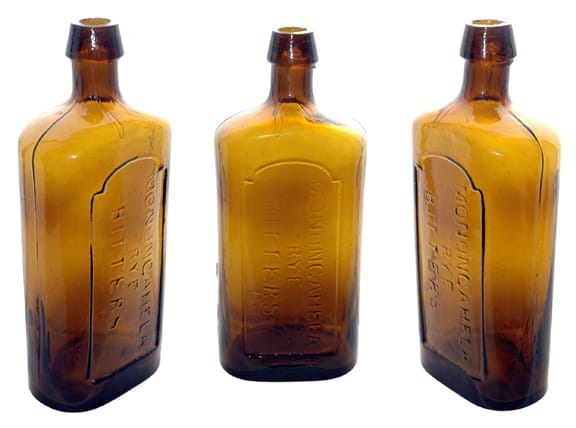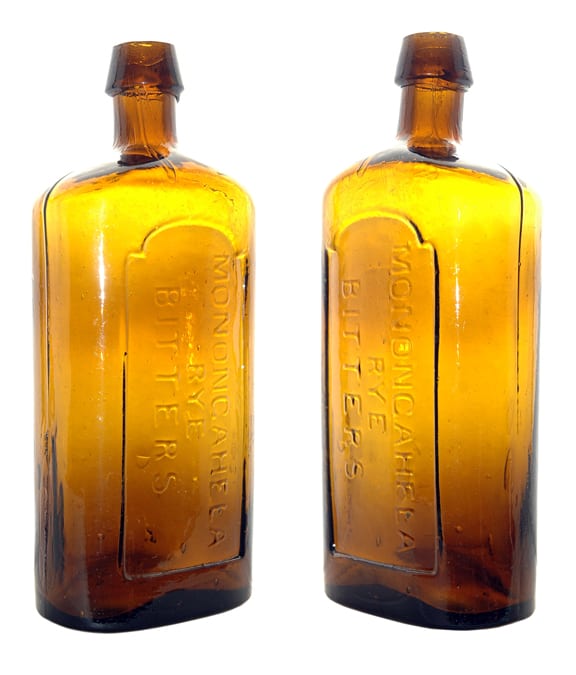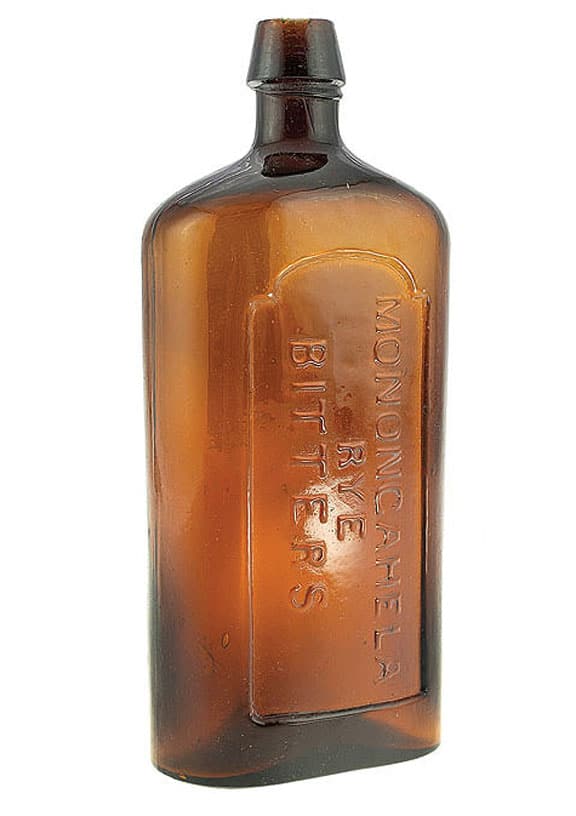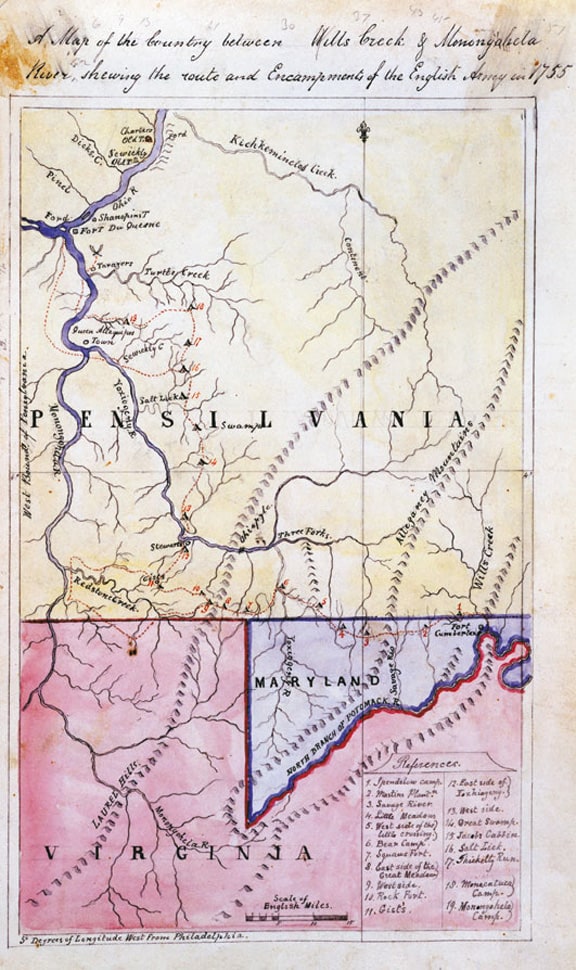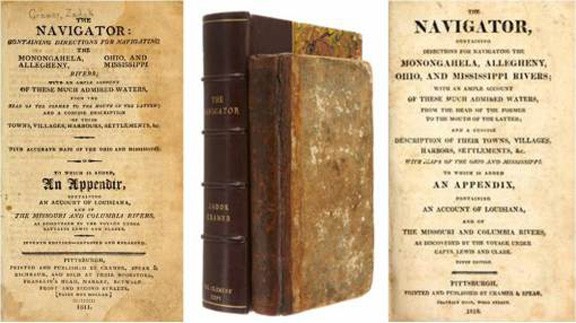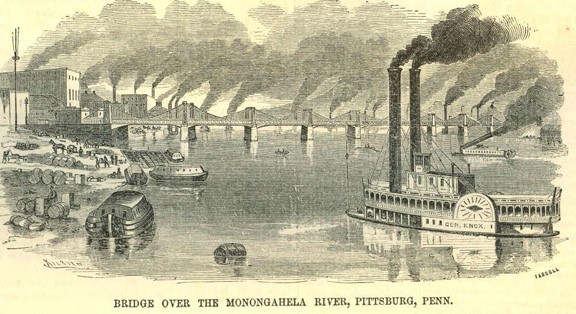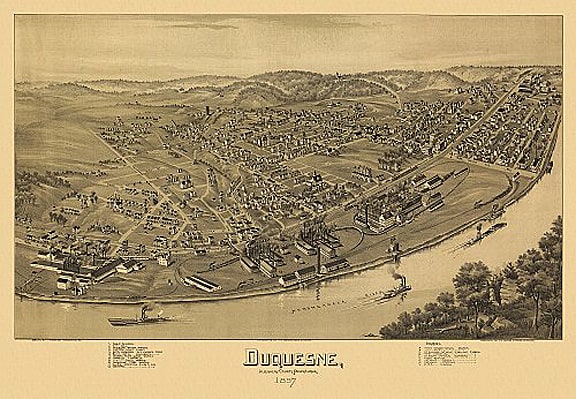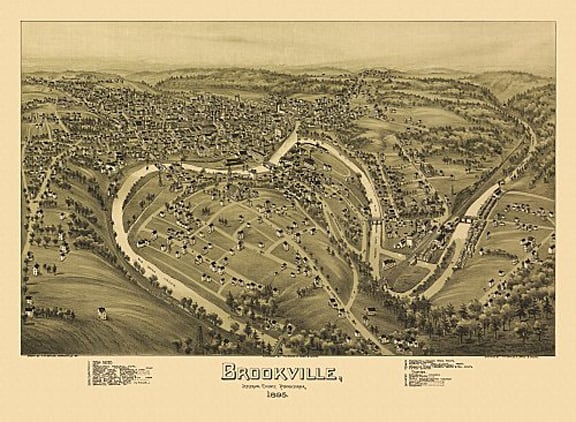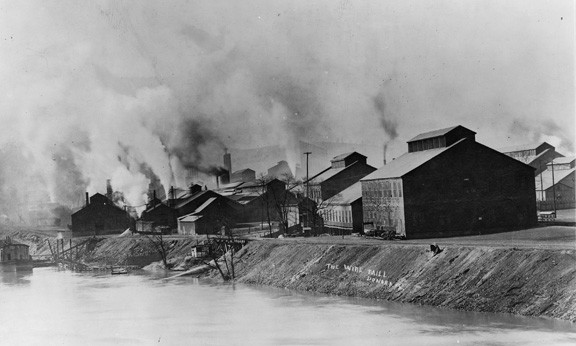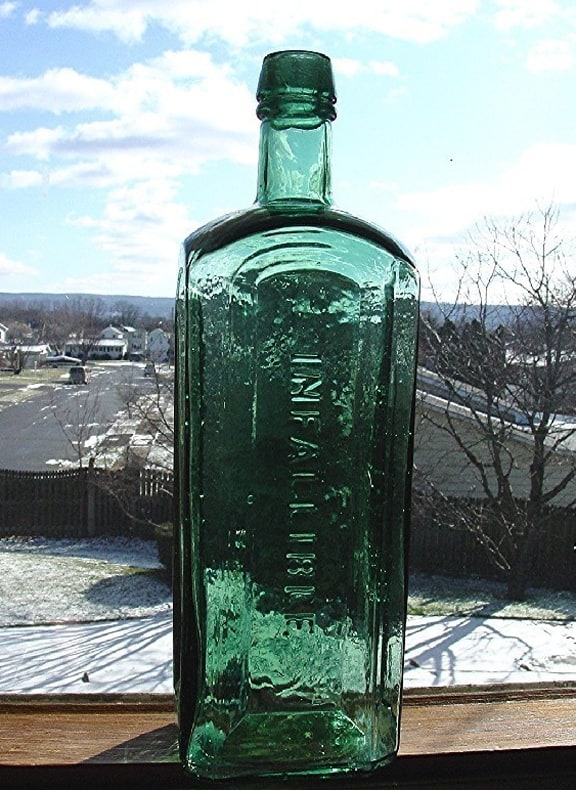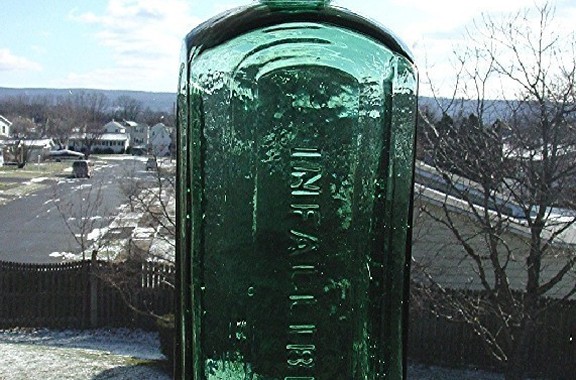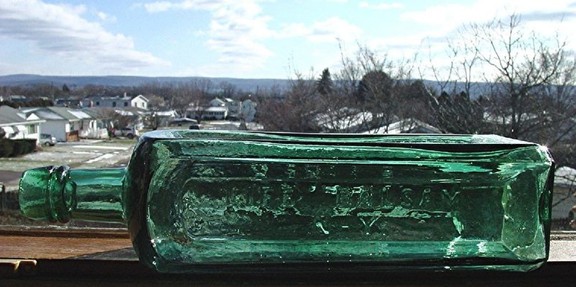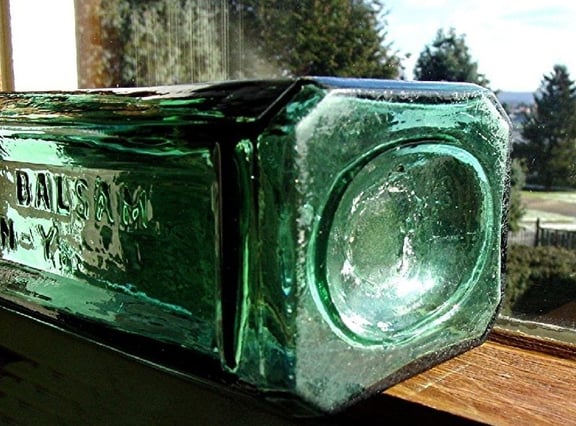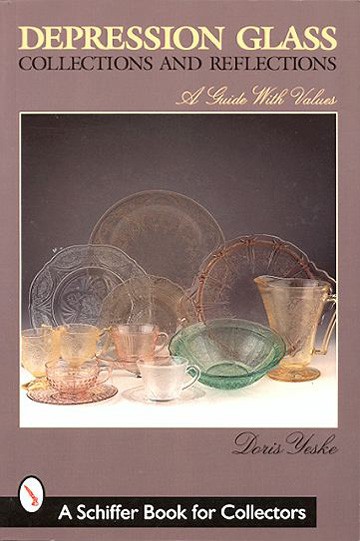 Today was filled with business in some neat historic places. We (an associate of mine Kim Cao, from FMG) started out in Winchester, Virginia and ended up with meetings in the town of Luray, Virginia. Instead of taking I-81 we drove the scenic Stonewall Jackson Memorial Highway and were able to squeeze in a little antique bottle and glass hunting in Front Royal and Luray, Virginia. I found a wicker demi-john that I will unravel and clean in Houston Saturday. I did come across this amazing antique shop full of depression era glass. Check these gorgeous table settings out. Don’t usually see full settings. Today, depression glass was my fix.
Today was filled with business in some neat historic places. We (an associate of mine Kim Cao, from FMG) started out in Winchester, Virginia and ended up with meetings in the town of Luray, Virginia. Instead of taking I-81 we drove the scenic Stonewall Jackson Memorial Highway and were able to squeeze in a little antique bottle and glass hunting in Front Royal and Luray, Virginia. I found a wicker demi-john that I will unravel and clean in Houston Saturday. I did come across this amazing antique shop full of depression era glass. Check these gorgeous table settings out. Don’t usually see full settings. Today, depression glass was my fix.


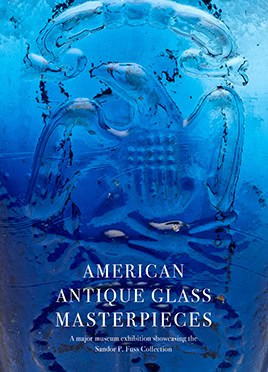
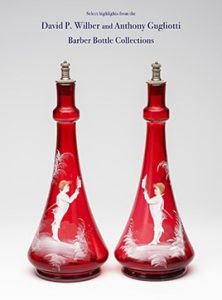


Posts
December 2025 M T W T F S S 1 2 3 4 5 6 7 8 9 10 11 12 13 14 15 16 17 18 19 20 21 22 23 24 25 26 27 28 29 30 31 -
Recent Posts
- Plants with Glass
- Cactus & Succulents
- NATURE
- Gazebo
- Florida Advertising Jugs
- Early Sodas of the Carolinas
- David P. Wilber and Anthony Gugliotti Barber Bottle Collections
- American Antique Glass Masterpieces
- Facts, Assumptions, and Stories about Round-Bottom Bottles
- Early Georgia Sodas
- Bitters Bottles Supplement 2
- Daily Dose | September 2025
- Daily Dose | October 2019
- Daily Dose | September 2019
- Looking at a Moffat Billhead
Recent Comments
- Ferdinand Meyer V on Barrel Series – Original Pocahontas Bitters
- The Life and Times of E.H. Taylor – E.H. Taylor, Jr. on A question regarding an “Old Taylor” find
- Froggy on The Triangular O.H.P. Rose’s Peruvian King Bitters
- etmcguire on Dr. Jaffe’s Celebrated Cinchona Bitters Trademark Letter
- mikedickman on Daily Dose | April • June 2 0 1 7
- gregtbr on The Triangular O.H.P. Rose’s Peruvian King Bitters
- Bocabottle on Early Damiana Bitters or is something wrong here?
- texas bottle man on Confederate Stomach Bitters – Angelo Velati – Columbus Georgia
- texas bottle man on Confederate Stomach Bitters – Angelo Velati – Columbus Georgia
- mikedickman on Daily Dose | July 2016
Archives
- October 2025 (4)
- September 2025 (4)
- January 2024 (1)
- October 2021 (1)
- December 2020 (1)
- November 2019 (1)
- October 2019 (1)
- September 2019 (1)
- August 2019 (2)
- July 2019 (1)
- June 2019 (1)
- May 2019 (4)
- April 2019 (4)
- March 2019 (5)
- February 2019 (7)
- January 2019 (7)
- December 2018 (8)
- November 2018 (7)
- October 2018 (11)
- September 2018 (6)
- August 2018 (3)
- July 2018 (1)
- April 2018 (2)
- March 2018 (4)
- February 2018 (2)
- January 2018 (1)
- December 2017 (1)
- October 2017 (7)
- August 2017 (1)
- July 2017 (3)
- June 2017 (6)
- April 2017 (1)
- March 2017 (1)
- February 2017 (1)
- January 2017 (3)
- October 2016 (4)
- September 2016 (3)
- August 2016 (3)
- July 2016 (3)
- June 2016 (1)
- May 2016 (2)
- April 2016 (1)
- March 2016 (8)
- February 2016 (8)
- January 2016 (5)
- December 2015 (3)
- November 2015 (17)
- October 2015 (14)
- September 2015 (11)
- August 2015 (6)
- July 2015 (4)
- June 2015 (9)
- May 2015 (15)
- April 2015 (13)
- March 2015 (16)
- February 2015 (21)
- January 2015 (21)
- December 2014 (24)
- November 2014 (22)
- October 2014 (29)
- September 2014 (16)
- August 2014 (27)
- July 2014 (26)
- June 2014 (23)
- May 2014 (27)
- April 2014 (27)
- March 2014 (36)
- February 2014 (39)
- January 2014 (40)
- December 2013 (28)
- November 2013 (35)
- October 2013 (41)
- September 2013 (42)
- August 2013 (42)
- July 2013 (38)
- June 2013 (38)
- May 2013 (35)
- April 2013 (38)
- March 2013 (43)
- February 2013 (28)
- January 2013 (37)
- December 2012 (44)
- November 2012 (37)
- October 2012 (50)
- September 2012 (44)
- August 2012 (48)
- July 2012 (47)
- June 2012 (40)
- May 2012 (49)
- April 2012 (42)
- March 2012 (45)
- February 2012 (36)
- January 2012 (43)
- December 2011 (38)
- November 2011 (54)
- October 2011 (31)
- September 2011 (31)
- August 2011 (43)
- July 2011 (36)
- June 2011 (23)
- May 2011 (38)
- April 2011 (75)
Categories
- Advertising (467)
- Advice (272)
- Ales & Ciders (38)
- Ancient Glass (7)
- Apothecary (59)
- Art & Architecture (72)
- Art Glass (3)
- Article Publications (153)
- Auction News (243)
- Barber Bottles (7)
- Bartending (2)
- Bitters (1,018)
- Black Glass (11)
- Blacking (4)
- Blown Glass (38)
- Bottle Shows (250)
- Bottles and Extras (44)
- Bottling Works (36)
- Bourbon (29)
- Bowls (5)
- Brandy (3)
- Breweriana (45)
- Candy (1)
- Carnival Glass (3)
- Chamber Pot (1)
- Chestnut (10)
- Civil War (104)
- Club News (158)
- Cod Liver Oil (4)
- Coffee (1)
- Cola (11)
- Collectors & Collections (724)
- Cologne (27)
- Color (26)
- Color Runs (174)
- Cordial (40)
- Currency (13)
- Daily Dose (53)
- Decanter (9)
- Demijohns (27)
- Depression Glass (6)
- Digging and Finding (318)
- Dinnerware (14)
- Display (79)
- Diving (17)
- Druggist & Drugstore (270)
- Early American Glass (132)
- eBay (147)
- Ephemera (228)
- Errors (1)
- Eye Cups (1)
- Facebook (63)
- Figural Bottles (310)
- Fire Grenades (5)
- Fishing Floats (2)
- Flasks (146)
- Fly Traps (2)
- FOHBC News (165)
- Folk Art (22)
- Food (1)
- Freeblown Glass (27)
- Fruit Jars (40)
- Gin (34)
- Ginger Ale (14)
- Glass Companies & Works (113)
- Glass Makers (68)
- Hair Tonics (25)
- Historical Flasks (114)
- History (945)
- Holiday (31)
- Humor – Lighter Side (89)
- Hutches (12)
- Infant Feeders (3)
- Inks (47)
- Insulators (42)
- Jelly & Jam (6)
- Juice and Ades (1)
- Lamps (3)
- Legal (9)
- Lightning Rod Balls (13)
- Liqueurs (8)
- liquor (24)
- Liquor Merchant (244)
- Mailbox Letters (20)
- Marbles (7)
- Medicines & Cures (589)
- Milk & Creamers (22)
- Milk Glass (10)
- Mineral Water (49)
- Miniatures (22)
- Museums (73)
- News (401)
- Painted Label (7)
- Paperweights (3)
- Passing (1)
- Patents (3)
- Peachridge Glass (48)
- Pepper Sauce (8)
- Perfume (20)
- Photography (143)
- Pickle Jars (23)
- Pitchers (7)
- Poison Bottles (22)
- Postage (25)
- Pot Lids (14)
- Pottery (13)
- Pressed Glass (1)
- Price Guides (3)
- Publications (63)
- Questions (341)
- Regulations (6)
- Remedy (63)
- Reproductions (6)
- Revolutionary War (14)
- Root Beer (4)
- Rum (2)
- Salt (4)
- Salve (3)
- Sarsaparilla (38)
- Sauce (5)
- Scams & Frauds (18)
- Scents (4)
- Schnapps (18)
- Sea Glass (3)
- Seltzer (2)
- Shaving Mugs (5)
- Shot Glasses (8)
- Snuff (10)
- Soda Bottles (40)
- Soda Water (41)
- Soft Drinks (17)
- Spanish-American War (1)
- Spirits (170)
- Stained Glass (6)
- Stoneware (21)
- Syrup (13)
- Target Balls (7)
- Tax Stamps (40)
- Tea (2)
- Technology (36)
- Temperance (3)
- Tobacco (15)
- Tonics (179)
- Trade Cards (106)
- Treasure (6)
- Uncategorized (25)
- Utility Bottles (53)
- Vases (7)
- Veterinary (7)
- Virtual Museum (13)
- Water (12)
- Whimsies (14)
- Whiskey (165)
- Windows (15)
- Wine & Champagne (48)
- Witch Ball (4)

